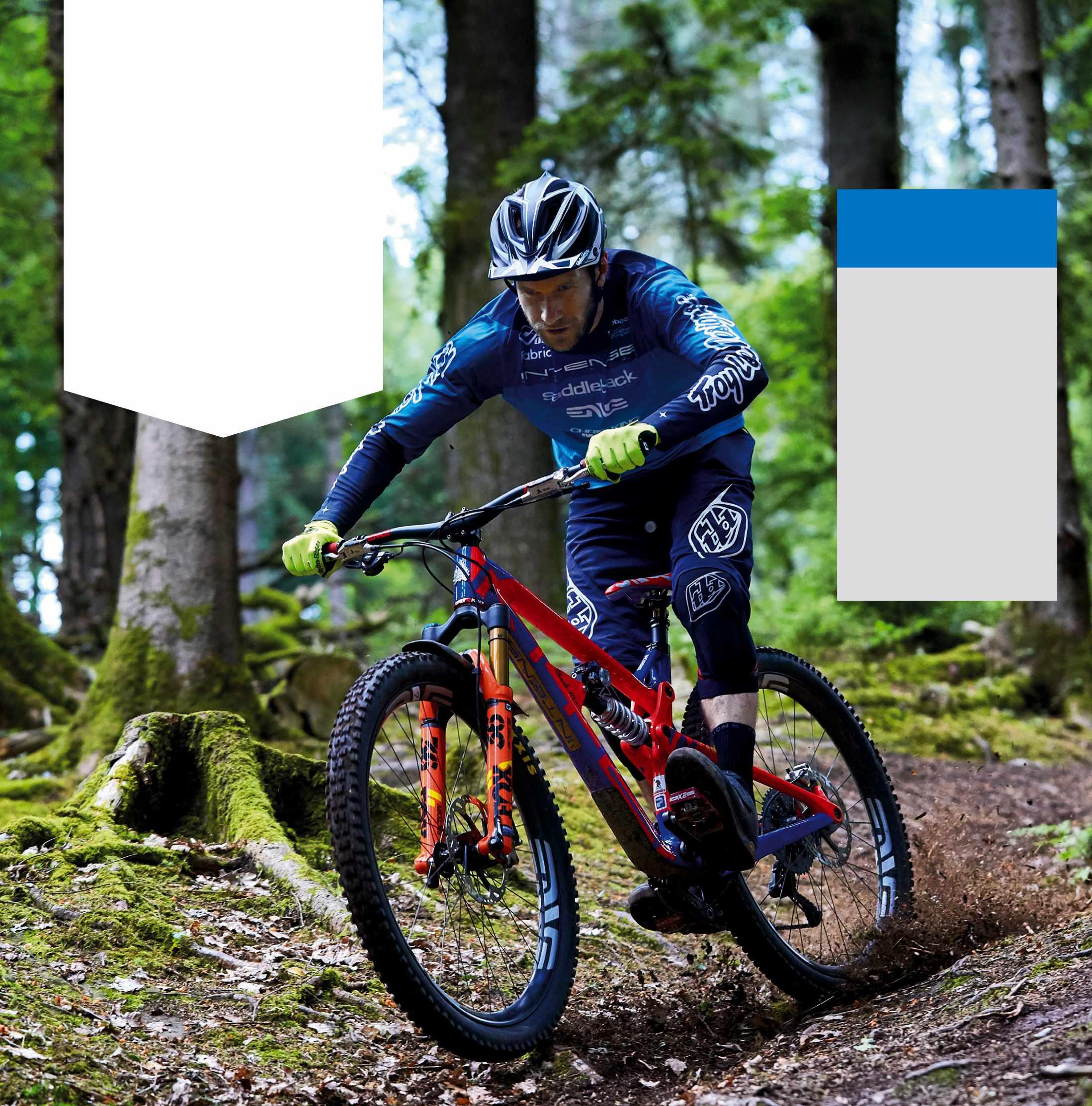
2 minute read
Brake control
BLUE TRAIL SKILLS
BRAKE CONTROL
“Get off the brakes – that’ll make you go faster!” We’ve all joked about this before, but it’s actually the worst way to get more speed. Using your brakes in a controlled way – rather than death-gripping the handlebar and hurtling down the trail out of control – will give you far more flow and overall momentum.
braking too much?
Conscious braking is something to work on to help you realise exactly where to use the brakes. Practise sections of trail where you make braking the thing you think about most. Try riding into the section with a plan of where you want to slow down and where you want to let off. Obviously, you don’t want to be consciously braking all the time, but it’s a good training technique and will become second nature in time.
1 MODULATION Modulating your braking means adjusting the force with which you pull the levers. Contrary to popular belief, brakes aren’t an on/off toggle – they produce gradual and progressive stopping power the harder you pull them. Minor adjustments make quite a difference to whether or not the wheel locks up. Practise riding down a steep hill and pulling the brake levers as hard as you can without skidding to help you learn the bite point.
2 BALANCE
By balance, we mean the amount you’re pulling one brake compared to the other. It’s common to see riders being too heavy-handed with the back brake, which makes the rear wheel slide and the bike get out of shape. If that sounds familiar, try using a little less rear brake and/or a little more front. While a lot of stopping power comes from the front brake, too much can throw your weight forward and put you off balance, and even make the wheel slide out. 3 TIMING Working out the optimum braking point is tough, especially for less-experienced riders. The general rule is to accelerate all the way through a section of trail. So, if you’re having to slow down through a section, that’s a sign you need to brake earlier. In corners, it’s essential to brake only on entry, then let off for maximum traction. This takes discipline, which can be hard. Bad habits often creep back in when you’re trying to ride at your limit. 4 TERRAIN Trail conditions have a significant impact on how you should use your brakes. We’d advise experimenting with your modulation, balance and timing on different types of terrain to see what works best for you. Here are some useful pointers: RUTTED OR DEEP DUST – use less front brake. SUPER-ROUGH – change where you brake, so the suspension isn’t inhibited and the bike doesn’t bounce around.










